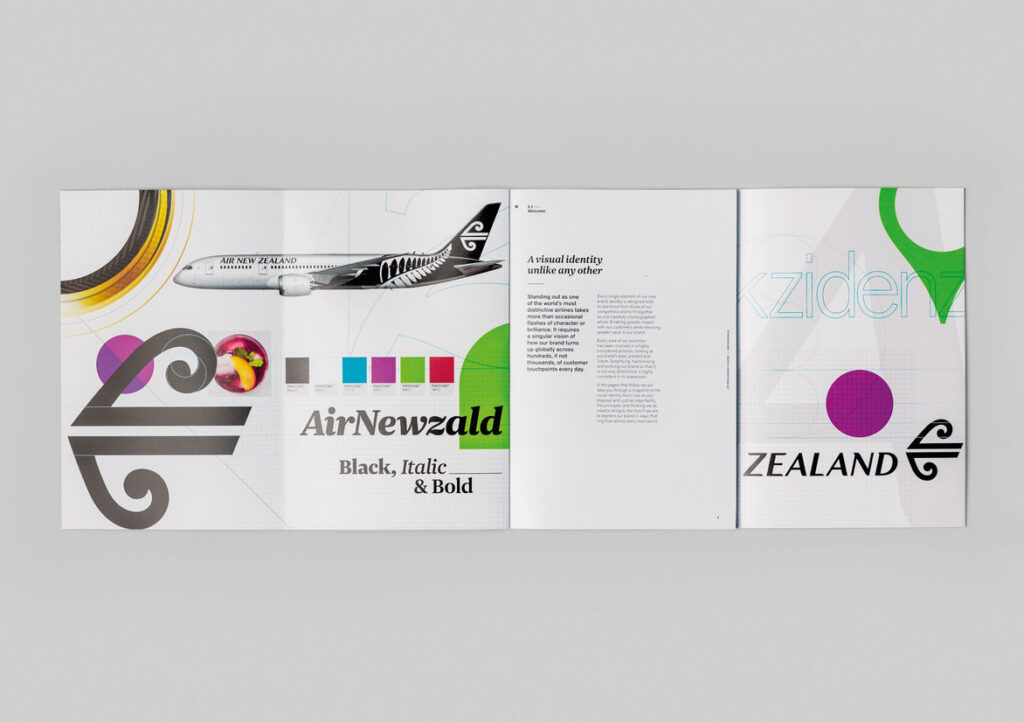Insight – 09/02/2025
In today’s competitive market, New Zealand businesses must craft compelling brand identities that resonate with their audiences. A strong brand goes beyond a memorable logo—it integrates strategy and design to create a cohesive and impactful presence. By aligning brand strategy with design, businesses can build trust, enhance customer loyalty, and differentiate themselves in the marketplace.

Understanding brand strategy
Brand strategy is the foundation of a company’s identity. It defines what the brand stands for, who it serves, and how it communicates its values. A well-defined strategy helps businesses build a strong, authentic presence in the market by aligning their mission with customer needs and expectations. It also provides a framework for decision-making, ensuring that all brand-related efforts contribute to a consistent and compelling message.
A strong brand strategy includes:
Brand Purpose – Why the business exists beyond profit. This should be an authentic statement that resonates with both employees and customers.
Brand Values – The principles guiding decisions and interactions. These values shape corporate culture and influence how the brand is perceived.
Target Audience – The customers the brand aims to attract and serve. A deep understanding of customer needs, behaviours, and aspirations ensures the brand remains relevant and engaging.
Positioning – How the brand differentiates itself from competitors. Positioning should highlight the brand’s unique value proposition and communicate why customers should choose it over alternatives.
Messaging – The key themes and tone of voice used in communication. A clear and consistent messaging strategy strengthens brand recognition and trust.
Without a clear strategy, design decisions can become arbitrary and fail to make an impact. A strong brand strategy informs every design choice, ensuring coherence and relevance across all brand touchpoints.
The role of design in brand strategy
Design brings a brand strategy to life visually and experientially. It ensures consistency, strengthens recognition, and reinforces emotional connections with customers. Key design elements include:
Logo and Visual Identity – The face of the brand, including colour schemes, typography, and imagery.
Website and Digital Presence – The user experience across digital platforms should align with the brand’s positioning and personality.
Packaging and Print Materials – Tangible brand expressions that should evoke the same message and feel as digital assets.
Environmental and Spatial Design – How a business’s physical presence, such as stores or offices, reflects its brand identity.
When design and strategy are aligned, the brand becomes a seamless experience rather than just a collection of visual elements.

Steps to integrate brand strategy with design
1. Define Your Brand’s Core Identity
Before diving into design, establish a clear brand purpose, mission, and vision. Understand the audience and market positioning to ensure that the brand’s visual identity aligns with its strategic goals.
2. Develop a Cohesive Visual Language
Work with professional designers to create a visual identity that embodies the brand strategy. Ensure elements like colour palettes, typography, and imagery reflect the intended brand personality—whether it’s premium, playful, innovative, or traditional.
3. Maintain Consistency Across Touchpoints
Every interaction with the brand, from a website visit to packaging design, should provide a consistent experience. Brand guidelines should be developed to ensure all visual and verbal elements are used consistently across digital, print, and physical environments.
4. Align Design with Customer Experience
Good branding is more than aesthetics—it’s about user experience. Ensure website navigation, store layouts, and customer service interactions reflect the brand’s values and promise.
5. Evolve and Adapt
Branding is not static. Businesses should regularly evaluate their design elements to ensure they remain relevant to market trends, consumer behaviour, and business goals.

Case studies from New Zealand
Many New Zealand businesses successfully integrate brand strategy with design. Companies like Air New Zealand have created globally recognised branding by combining storytelling, strong visuals, and a customer-centric approach. Similarly, brands like Allbirds and Whittaker’s leverage design to reinforce their sustainable and heritage-driven brand strategies.

Conclusion
For New Zealand businesses, the integration of brand strategy with design is essential for long-term success. By ensuring alignment between purpose, values, and visuals, companies can create meaningful connections with customers, build brand loyalty, and stand out in the market. Investing in a strategic and well-designed brand identity is not just an aesthetic decision—it’s a powerful business strategy that drives growth and engagement.
Say Hello!
Studio Nine
33-45 Hurstmere Rd
North Shore, Takapuna
M. +64 21 1306 713
katrina@studionine.co.nz
© Studio Nine
Branding & Graphic Design NZ

